If you’ve read a few of my posts, you know that I place a high value on museums and parks—places that preserve natural and cultural history for all to appreciate and enjoy. In these fractious times, it’s more important than ever to take time for adventures that teach and inspire.
On a lovely Sunday in March, I toured Jack London State Park along with several other members of the California Writers Club, Sacramento branch. We’re very grateful for the extensive private tour led by the park’s Volunteer Coordinator, Susan St. Marie, and volunteer Rich Brumley who escorted us and interpreted the exhibits. We were interested in seeing London’s famous retreat, with a special curiosity about his writing chair. More about that in a moment!
In 1909, the California Writers Club began in the Bay Area, and in 1925, local members established the Sacramento branch to which I belong. Our chapter will hold a Centennial Celebration on October 18, 2025. There is quite a link between Jack London and the CWC, as he was a founder of the original Bay Area chapter.
Located just above the town of Glen Ellen in Sonoma County, London and his wife, Charmian, purchased “Beauty Ranch” in 1905. Originally 130 acres, the couple bought adjoining farms between 1908 and 1913, giving them 1,400 acres. In 1911, construction began on a 15,000 square foot home with 26 rooms and 9 fireplaces. They called it Wolf House and built it in the Arts and Crafts style from local volcanic rock. The grand home burned down August 22, 1913. Luckily, this was before Jack and Charmian moved in. The suspected cause was spontaneous combustion from oily rags left behind by a worker.
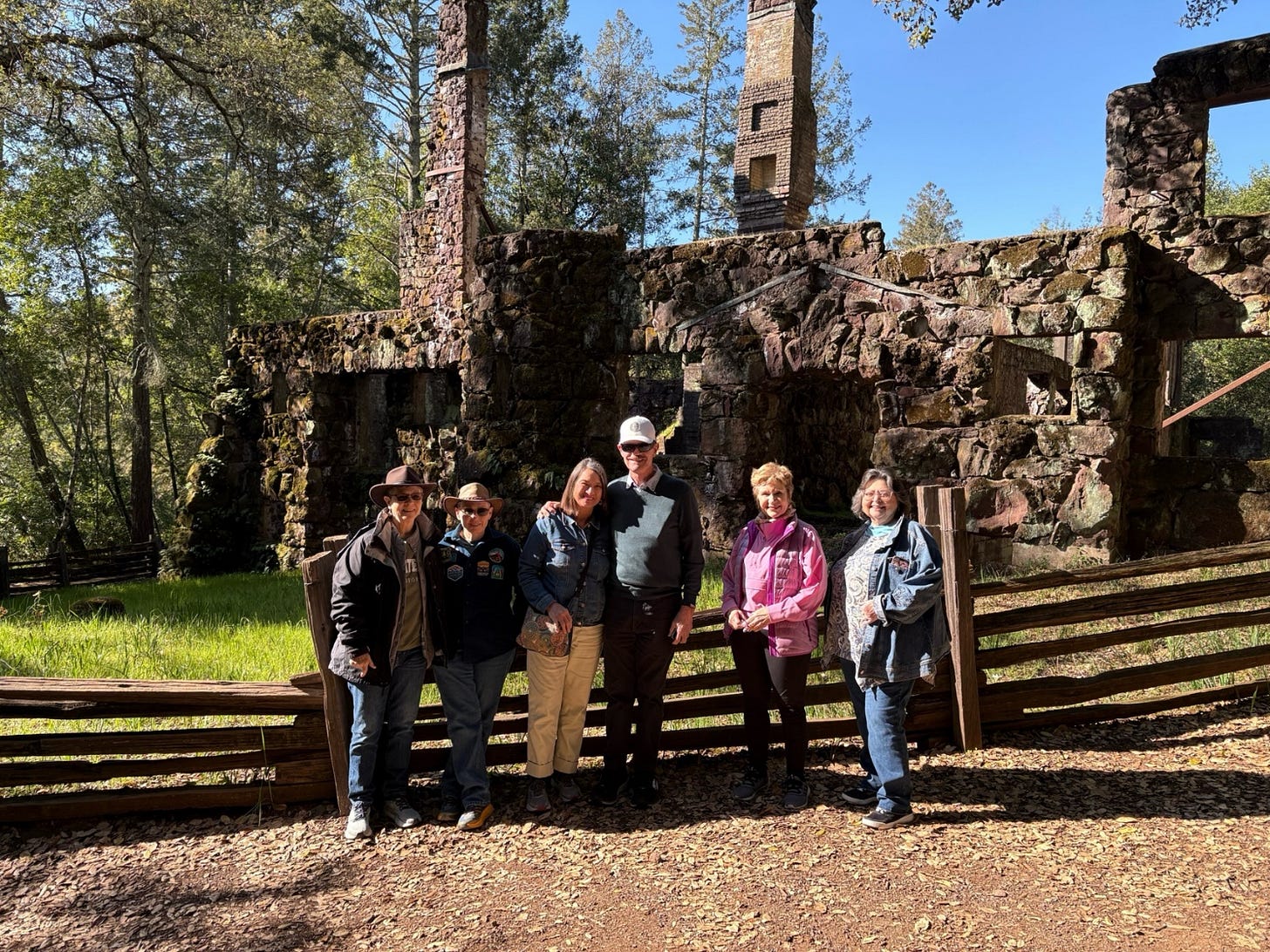
In 1911, London and Charmian moved to a small wooden cottage in the middle of the property. They intended for the cottage to serve as temporary housing while Wolf House was under construction, but after the fire, London lacked funds to rebuild the large home.
London’s writing studio in The Cottage, shown here, includes his famous writing chair. In the 1970s, Gladys Morse, wife of a past president of CWC-Sacramento, and Irene Donelson, another prominent member, gave the chair to Jack London Park. Our tour guide revealed that until Kim Edwards called and asked about the chair, the staff was uncertain which of the chairs on site was Jack’s preferred perch. She said its tag was missing. Now, it is back in its rightful spot, properly identified! CWC-Sacramento members who visit Jack London State Park can take pride in our connection with this important piece of literary furniture.

London didn’t confine his writing to his desk, however. He strung clothesline over his bed and wrote long into the night, clipping his ideas up with clothespins so he would remember them come morning. It’s no wonder Charmian slept in another room most nights!
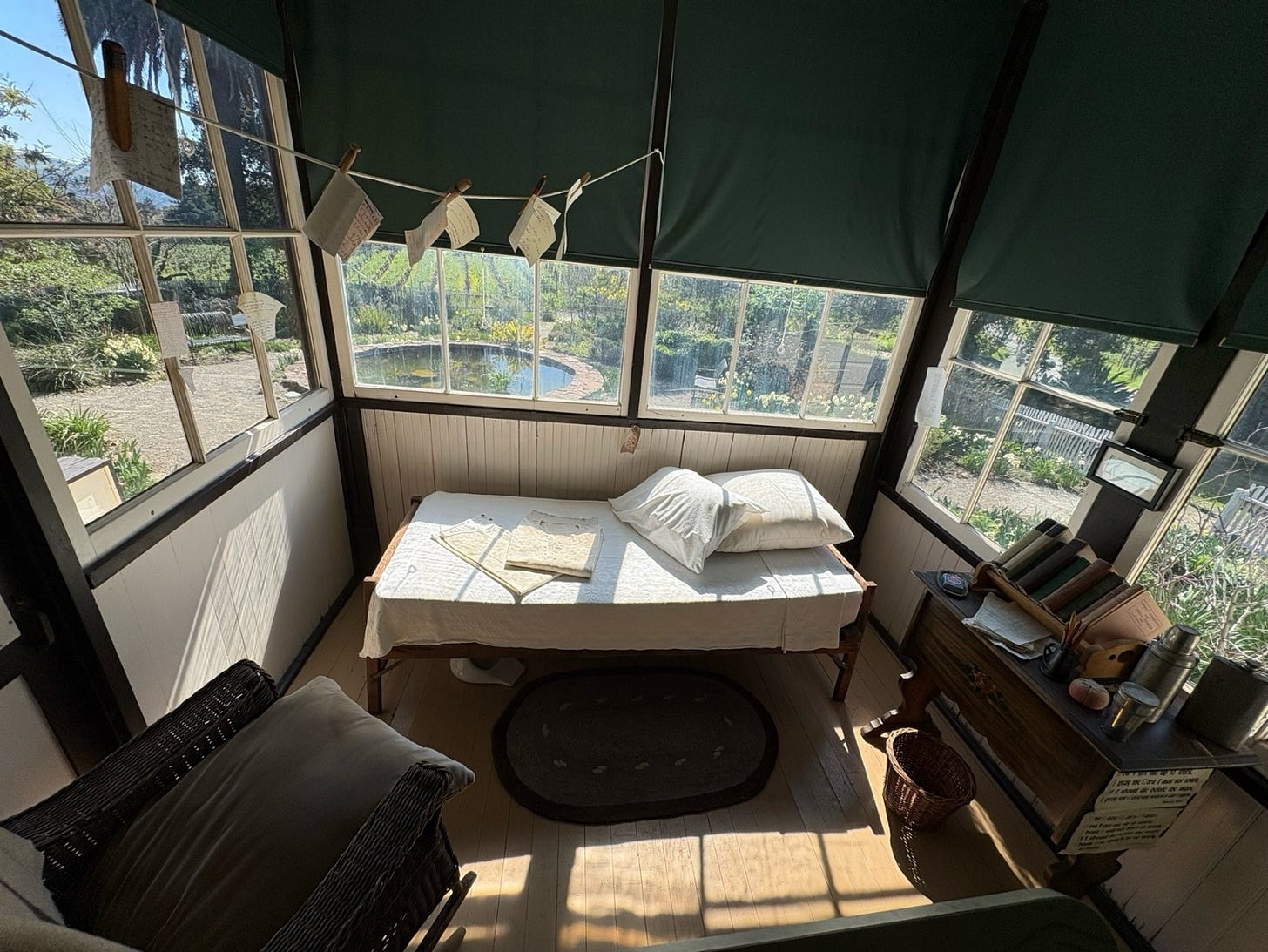
London was a devotee of so-called “scientific agriculture,” and consulted with U. C. Davis to learn the latest farming techniques. He replaced the nutrients used by his crops, an uncommon practice. London rigged up a pulley system between the animal barns and a third building to store manure from the barns for later land application.
Some of his agricultural ideas didn’t pan out, however. After discovering eucalyptus trees during a trip to Australia, London bought into the notion the trees would produce good lumber and planted a crop of 80,000 seedlings. To supply water to his trees, he purchased a water wagon from the San Francisco Fire Department. Sadly, the wagon proved too heavy to be pulled up and over the hilly terrain.
The trees didn’t fare well either. London discovered that eucalyptus wood was prone to cracking and was susceptible to insect attacks, making the investment a poor one. Another idea he derived from traveling to Australia was planting a cactus garden. He worked with well-known horticulturist Luther Burbank, and together they planted a field of spineless cacti to use for cattle feed. Alas, the soil and moist climate of Sonoma County proved less than ideal for the growth of this desert plant. Today, a small cactus garden grows on the ranch in tribute to his grand idea.
There were successes, however. The Pig Palace (moniker given by a San Francisco reporter who visited the ranch) had seventeen pig apartments and could house up to 217 pigs and piglets. A special watering apparatus simultaneously watered all the pigs, and the feed was stored in this quaint round shed.
London’s many overseas travels, combined with the fact that he continued to spend time in his hometown of Oakland, meant that he had limited time to spend at his beloved ranch. His untimely death in 1916 (at age 40) robbed him of his dream of spending years writing at Beauty Ranch. Considering that he wrote fifty novels between 1900 and 1916, one wonders what more he could have produced had his life been longer.
After his death, Jack’s sister Eliza London Shepard ran the ranch until she passed on in 1939. His wife Charmian died in 1955. The ashes of all three rest on a knoll beneath a large red rock taken from the ruins of Wolf House.
Architect Harry P. Merritt designed London’s House of Happy Walls Museum, built by Charmian and Eliza after her husband’s death. Charmian always intended it to be a museum one day. She lived in the house from 1935 until 1952. Contained within is Charmian’s prized 1901 Steinway grand piano. On weekends, local pianists volunteer to play Charmian’s piano. The lovely sounds resonate throughout the museum and remind listeners of days gone by.

I think everyone on this special tour walked away with a new appreciation of Jack London’s life and vision. London was truly a literary lion, and his influence continues to be felt today. Without his leadership and enthusiasm, it’s doubtful that the California Writers Club would have become the strong, vibrant literary organization we value today.





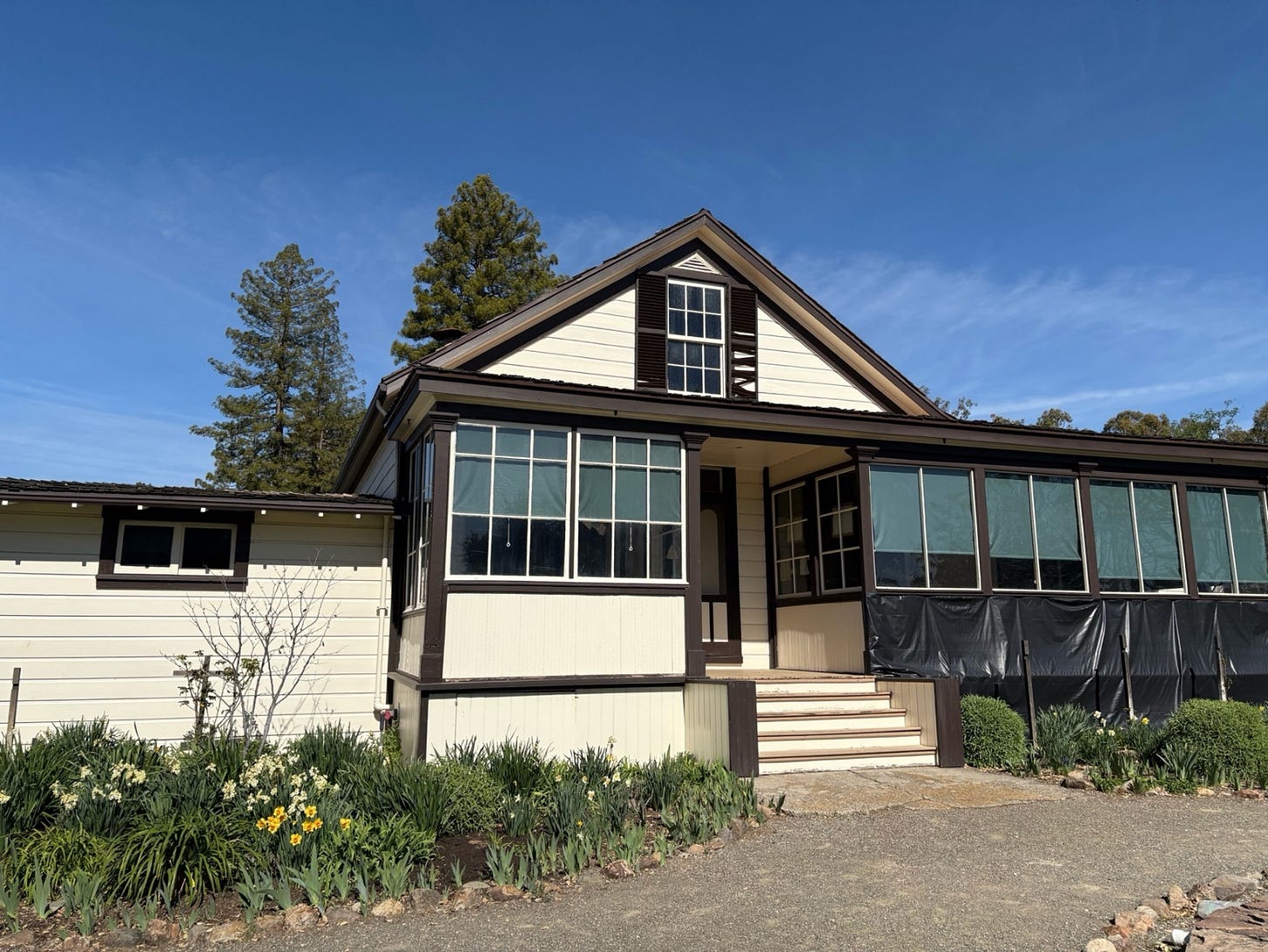
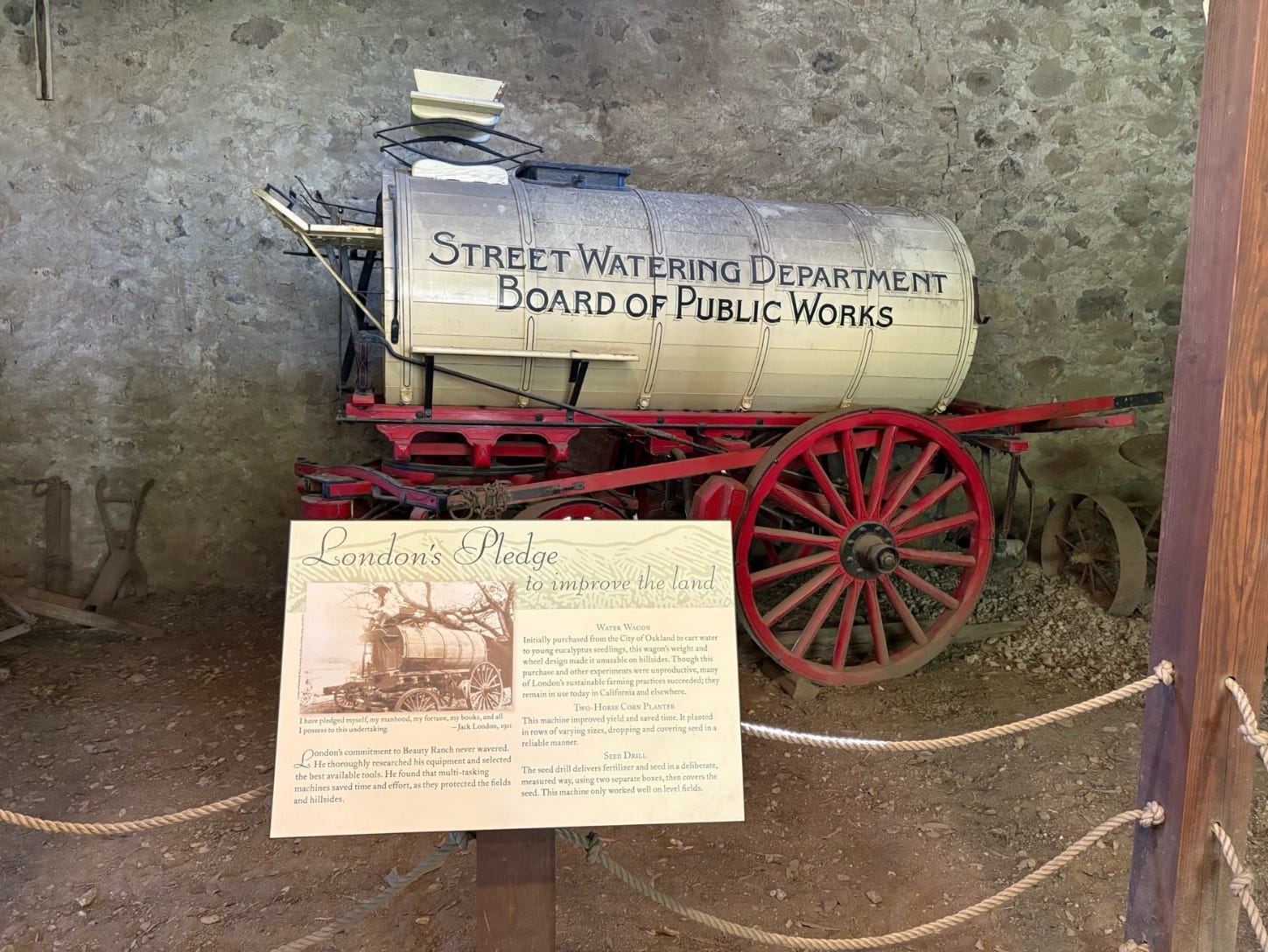
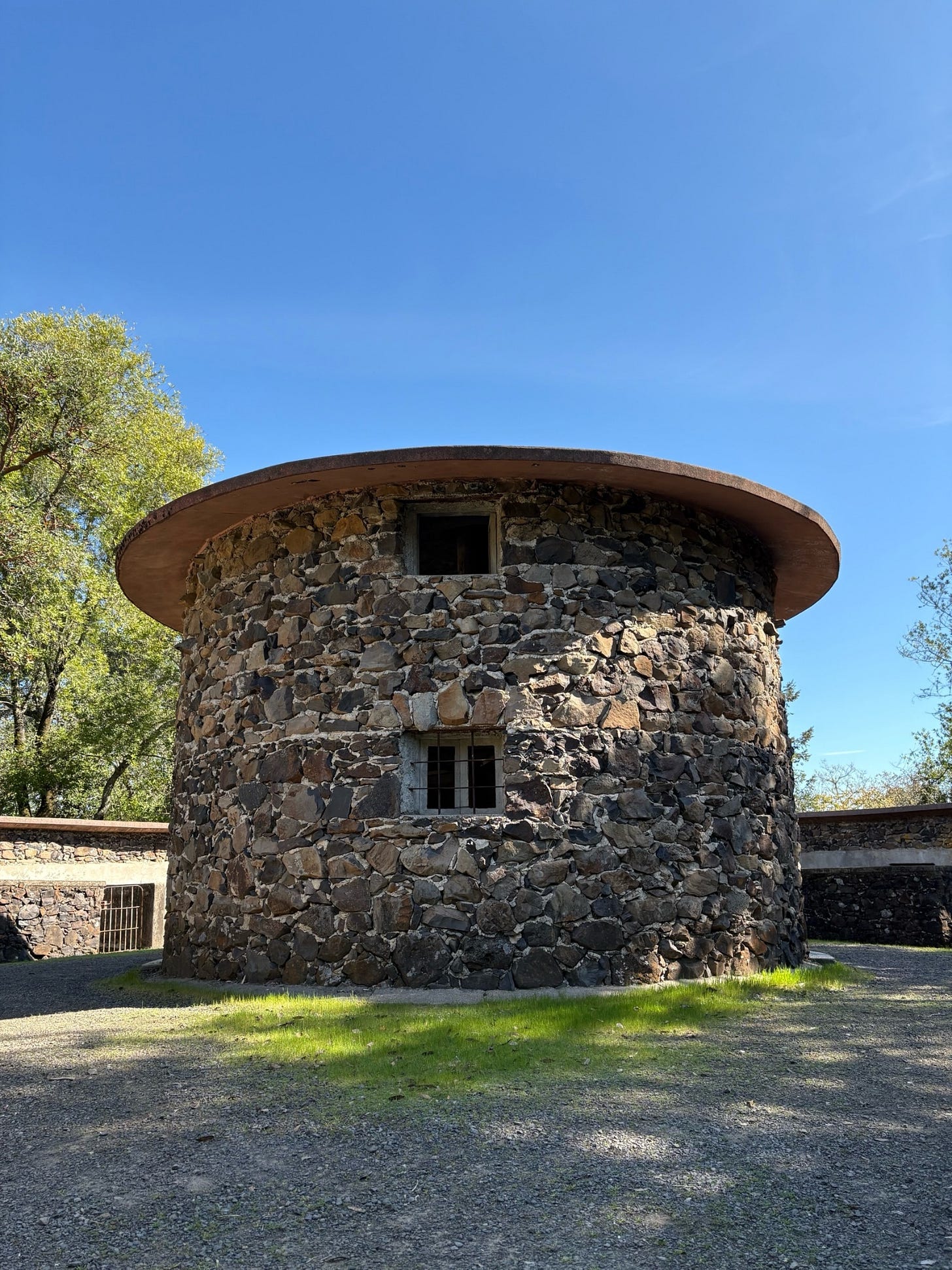
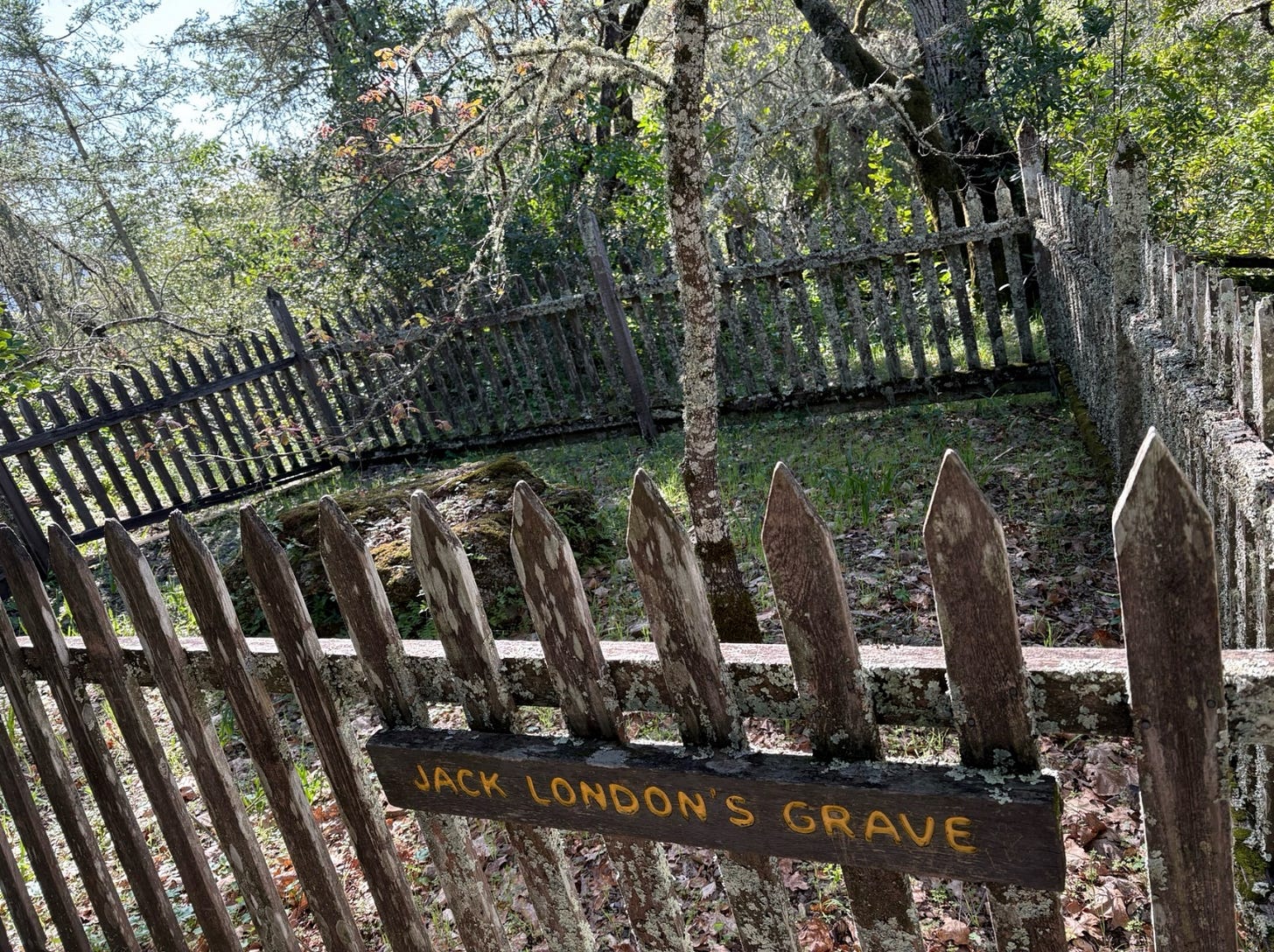
I WANT HIS DEN!!!
Sounds like a fascinating tour. It's been on my list of places to visit for a while, but you have inspired me to go sooner rather than later. Thanks for sharing your experience, Julie!